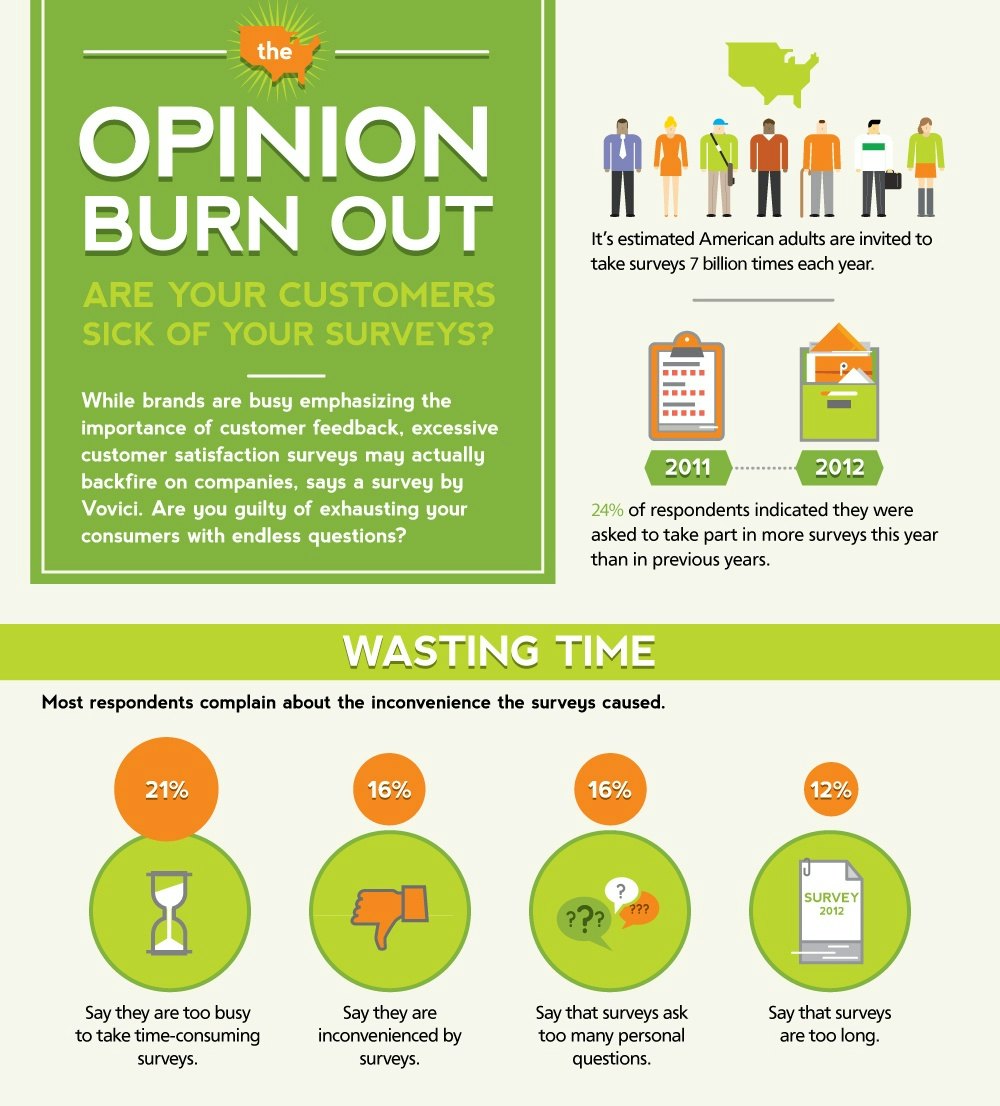Most industries experience seasonal sales slumps – at some point in the year, sales will naturally start to curtail, and the typical organizational response is to accept this seasonality, pull back on sales and marketing efforts, and wait demand to pick back up. This is a huge mistake.
The seasonal sales slump may very well be an organization’s best opportunity to inject innovation into their sales and marketing. If you’re looking for what you can do to innovate in your sales and marketing, look no further. We have three ideas for innovating during a low sales season; last time we discussed co-branding and co-marketing partnerships. This time, we’re talking about stakeholder surveys.
Strategy 2: Survey Your Stakeholders
We cannot speak enough about the value of taking the time to regularly understand what your customers, prospects, and employees think of your company, your products, and your industry. It is difficult to sell to prospects or to attract and retain talent whom you don’t understand. Making these efforts sporadically every several years is insufficient, but we will admit that taking the time to conduct these surveys, interviews, or focus groups can seem daunting and it may feel like they produce very little immediate return. This is why the seasonal sales slump could be the perfect time to make the effort.
Which form these surveys take depends on your business model and the audience you’re surveying. There is no one-size fits all solution. But here are some guidelines to help you evaluate which form may be the most appropriate, based on the audience you want to target.
Customers
Of those companies rated as delivering best-in-class customer experience, 70% collect, analyze, and respond to regular customer feedback, compared to the industry average 50% and the 29% of companies considered customer experience laggards. But as this 2012 infographic from Zendesk points out, customer surveys can be perceived as an inconvenience, especially if you’re trying to survey a large number of customers through a digital survey (as opposed to in-person, phone, or video interviews with a handful of customers with whom you have a closer relationship).
Perhaps a better way is to use a simple measure, like Net Promoter Score, which asks customers a single question and is used by thousands of brands worldwide.
Employees
Companies that rank in the top 25% on employee engagement produce 2.5 times more revenue than those in the bottom 25%, according to a study from the Hay Group. There is a lot that goes into creating a culture of highly engaged employees, but the most important thing to note here is that this is not a static measure. Companies with the most engaged employee bases are those that frequently gauge the temperature of their internal community and culture. A low sales season is a great time to survey your employees, but we recommend you do so at least twice a year (a cadence we’ve adopted for ourselves).
There are likely hundreds of tools for surveying your employees. While there is no one-size fits all solution, the simpler the measure (ex., employee Net Promoter Score), the more likely it is that employees will want to complete it.
Prospects
If your team is responsible for selling directly to businesses or consumers, then your sales team is already asking questions that can be turned into aggregate survey data. “My biggest challenge is X,” “the most important thing to me is Y,” “I found you all through Z” – all of these responses should be collected, aggregated, and analyzed. If you’re not already doing this, then use your slow season to implement this collection and analysis.
Marketing can help provide a more complete picture of your prospects to include those who haven’t made it far enough into the buying cycle to engage with your sales team. We’re all familiar with the age-old form question, “How did you hear about us?” But there are other valuable questions you can ask your prospects through marketing channels without scaring them away. Want to get a read on how useful the content you’re producing is? Send a quick survey to your email subscribers or include a simple measure on your site to achieve this same effect.
You should also be using data gathered from your analytics and marketing automation systems to help fill in your understanding of who prospects are, where they came from, and what motivates them to convert or disengage.
Users
“Users” encompass any individuals who engage with your company across digital channels, which means users include customers, employees, prospects, media, job candidates, competitors, social media followers, family members, blog subscribers, and people who find themselves lost online. So why talk about surveying users specifically if the group includes other stakeholder categories? Because users can help you understand how effective your digital channels are at doing what you want them to do.
We use user-testing to evaluate things like site navigation, conversion paths, and content quality. Have a product page that’s not getting as much traffic as you expected? Or a multi-page sign-up process that’s experiencing a ton of drop-offs halfway through? User-testing can help you understand why this is happening.
There are several great user-testing platforms out there: VWO, User Testing, and Qualaroo are some of our favorites. Whichever you choose, make certain to set your expectations appropriately – any one test might not provide immediate insights. It’s when user testing data collects over time that it’s most effective at driving organizational growth. This is why low season may be the best time to develop and implement user testing – you can apply low season testing lessons to more critical tests during peak demand.
Know What People Think Today
Opinions change almost constantly, and if your business is operating based on old information, it’s going to point you in the wrong direction. Surveying your stakeholders every few years isn’t enough – honestly, doing it only once a year probably isn’t. But your slow sales season is a perfect launching point, and your business must take advantage.
To finish this series, we’ll discuss rebates and discounts, and how when used sparingly, they can help jumpstart a low season for sales.
Innovation Strategies for a Slow Sales Season Blog Series
Part 1: How to Create a Successful Co-branding Program during Your Slow Season
Part 3: What Separates an Effective Discounting Strategy from a Disastrous One





